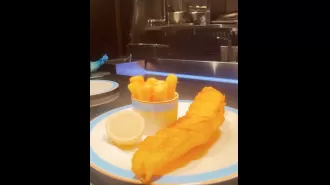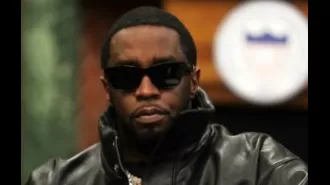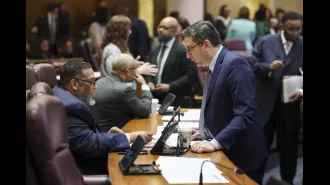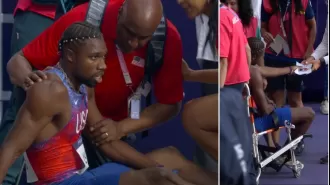I thought it was a rash, but got a surprising diagnosis.
The sensation was not uncomfortable, only annoying.
February 15th 2025.
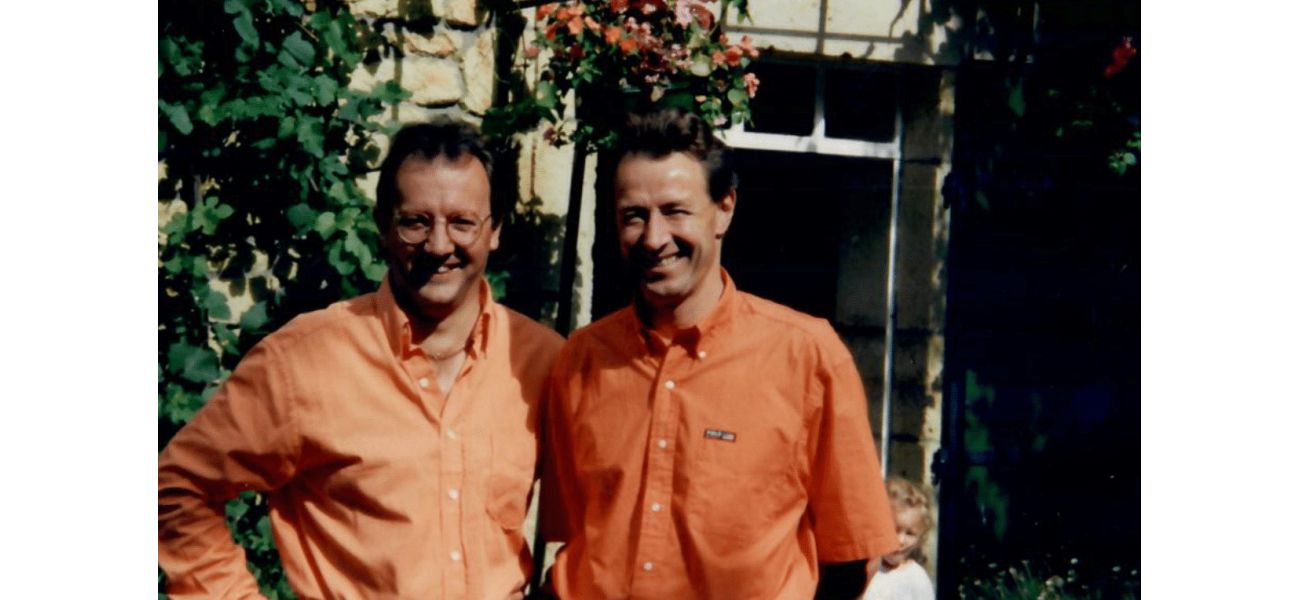
It was June 1994, and I was lying in my hospital bed, feeling completely helpless and uncertain about what the future held for me. At 38 years old, I had just undergone a bone marrow transplant in hopes of treating my leukaemia. The only thing left to do was wait and see if my body would accept the new bone marrow. It was a nerve-wracking waiting game, not knowing whether I would live or die, or if I would ever see my loved ones again. Little did I know, this experience would lead me to an unexpected friendship with my donor, Stewart.
My journey with leukaemia began four years prior, when I noticed a small rash under my arm. It wasn't bothersome, but just to be safe, I went to see a doctor. Unfortunately, my regular doctor was on vacation, and a temporary replacement gave me some cream and ran some blood tests as a precaution. A few days later, I received a call from the doctor's office, asking me to come in immediately. It was then that I heard the words that would change my life forever: chronic myeloid leukaemia (CML). It was a rare form of cancer that affects the bone marrow and white blood cells, and I was completely blindsided by the diagnosis.
Not only was the diagnosis shocking, but the timing couldn't have been worse. My wife and I had 18-month-old twins at home, and my business partner and I had just relaunched our restaurant, The Ivy. I felt lost and overwhelmed in the days that followed, trying to come to terms with my diagnosis and all the unknowns that came with it.
I was referred to Dr. John Goldman at Hammersmith Hospital, who confirmed that I did indeed have CML after conducting some tests, including drilling into my hip. My two sisters were tested to see if they could be a stem cell match for me, but unfortunately, neither was a match. At that point, I was put on the Anthony Nolan register to find a donor, and thus began my four-year-long wait.
During that time, I was prescribed a drug called Interferon, which helped stabilize my white blood cells. The side effects, however, were like having a constant hangover, and I was constantly fatigued. But I was grateful that I was still able to carry on with my normal life while I waited for a donor.
I tried not to dwell on my diagnosis too much during the day, but at night, when I had to self-administer the Interferon with a needle, it was hard to push it out of my mind. No one could tell me how long it would take to find a donor, but one day, Dr. Goldman came to me with some great news – a donor had been found, and it was my best chance at beating this disease. He reminded me that I needed to grasp this opportunity and make the most of it.
In order for the transplant to take place, my own bone marrow had to be destroyed through chemotherapy and radiotherapy. It was a grueling five days, and I was left with no resistance to any infection, making it impossible for my children to visit me in the hospital. They would stand outside my room and talk to me on the phone, but eventually, I asked my wife not to bring them at all. It was too difficult for me to see them and not be able to hold them.
The days leading up to the transplant were filled with uncertainty and fear, but I wanted to do something to express my gratitude to my donor for their selfless act. So I wrote them a letter, not knowing if it would even reach them, but wanting to thank them nonetheless.
In the end, the transplant was a success, and I am forever grateful to Stewart, my donor, for saving my life. We have since become good friends, connected by this life-changing experience. My children are all grown up now, and I am lucky to have seen them grow and thrive. I am also grateful to have the opportunity to share my story and raise awareness about CML. If you or anyone you know is experiencing symptoms, please don't hesitate to speak to a doctor. Early detection can make all the difference.
Lying in my hospital bed in June 1994, I was overwhelmed with uncertainty. The bone marrow transplant I had just undergone to treat my leukaemia had left me on a precarious edge, unsure of what my fate would be. At 38 years old, I was anxiously awaiting to see if my body would accept the new bone marrow that had been graciously donated by a stranger. The thought of not knowing whether I would survive or ever see my loved ones again was a heavy weight on my heart. Little did I know, this experience would not only save my life but also lead to a beautiful friendship with my donor.
It all began four years prior when I noticed a small rash under my arm. It wasn't painful or bothersome, just a minor irritation. I decided to see a doctor about it, but my usual physician was away on vacation. A temporary doctor prescribed some cream and conducted some blood tests, just to be safe. Little did I know, those tests would reveal that I had chronic myeloid leukaemia (CML), a rare type of cancer that affects the bone marrow and white blood cells.
Hearing this diagnosis was like a bolt of lightning, leaving me feeling lost and overwhelmed. It was also the worst timing imaginable. I had 18-month-old twins with my wife, and my business partner and I had just relaunched our restaurant, The Ivy. But there was no time to dwell on the timing, I had to focus on my health.
CML can affect anyone at any age, but it is more common in those over 65. The cancer develops slowly over several years and is usually treatable. Some common symptoms include weakness or fatigue, easy bruising or bleeding, pale skin, frequent illnesses, swollen glands, bone pain, loss of appetite, a swollen abdomen, night sweats, and headaches. If you experience any of these symptoms, it's important to see a doctor as soon as possible.
I was referred to John Goldman at Hammersmith Hospital, who confirmed my CML through tests that involved drilling into my hip. My sisters were tested to see if they were a stem cell match for me, but unfortunately, they were not. I then turned to the Anthony Nolan register for potential donors, beginning a four-year wait for a match.
During this time, I was put on a drug called Interferon, which helped stabilize my white blood cells. However, the side effects made me feel like I had a constant hangover and left me feeling exhausted. I tried my best to push my diagnosis to the back of my mind and continue with my daily life. But at night, when I had to self-administer the Interferon with a needle, it was hard to ignore.
The wait for a donor was unpredictable, but one day, John gave me the news that we had found one. He told me it was our best chance and that I needed to "grasp the nettle" at this stage. In order for the transplant to be successful, my own bone marrow had to be killed off with chemotherapy and radiotherapy. This process took five grueling days and left me vulnerable to infections.
During this time, my children were not allowed to visit me in the hospital due to my weakened immune system. We would talk on the phone instead, but eventually, I asked my wife not to bring them at all. It was too difficult for me to see and not be able to hold them in my arms.
As the days drew closer to my transplant, I wrote a letter to my donor, expressing my heartfelt gratitude for his selfless act. I had no idea if the transplant would work, but I wanted to thank him regardless. Little did I know, this letter would be the beginning of a life-long friendship.
Today, my children are grown, and I am forever grateful for my donor and the chance to see my family again. My experience with CML has taught me to never take anything for granted and to always be grateful for the little things in life. I am also an advocate for raising awareness and supporting those who are fighting this disease. I believe that with support and perseverance, anything is possible.
My journey with leukaemia began four years prior, when I noticed a small rash under my arm. It wasn't bothersome, but just to be safe, I went to see a doctor. Unfortunately, my regular doctor was on vacation, and a temporary replacement gave me some cream and ran some blood tests as a precaution. A few days later, I received a call from the doctor's office, asking me to come in immediately. It was then that I heard the words that would change my life forever: chronic myeloid leukaemia (CML). It was a rare form of cancer that affects the bone marrow and white blood cells, and I was completely blindsided by the diagnosis.
Not only was the diagnosis shocking, but the timing couldn't have been worse. My wife and I had 18-month-old twins at home, and my business partner and I had just relaunched our restaurant, The Ivy. I felt lost and overwhelmed in the days that followed, trying to come to terms with my diagnosis and all the unknowns that came with it.
I was referred to Dr. John Goldman at Hammersmith Hospital, who confirmed that I did indeed have CML after conducting some tests, including drilling into my hip. My two sisters were tested to see if they could be a stem cell match for me, but unfortunately, neither was a match. At that point, I was put on the Anthony Nolan register to find a donor, and thus began my four-year-long wait.
During that time, I was prescribed a drug called Interferon, which helped stabilize my white blood cells. The side effects, however, were like having a constant hangover, and I was constantly fatigued. But I was grateful that I was still able to carry on with my normal life while I waited for a donor.
I tried not to dwell on my diagnosis too much during the day, but at night, when I had to self-administer the Interferon with a needle, it was hard to push it out of my mind. No one could tell me how long it would take to find a donor, but one day, Dr. Goldman came to me with some great news – a donor had been found, and it was my best chance at beating this disease. He reminded me that I needed to grasp this opportunity and make the most of it.
In order for the transplant to take place, my own bone marrow had to be destroyed through chemotherapy and radiotherapy. It was a grueling five days, and I was left with no resistance to any infection, making it impossible for my children to visit me in the hospital. They would stand outside my room and talk to me on the phone, but eventually, I asked my wife not to bring them at all. It was too difficult for me to see them and not be able to hold them.
The days leading up to the transplant were filled with uncertainty and fear, but I wanted to do something to express my gratitude to my donor for their selfless act. So I wrote them a letter, not knowing if it would even reach them, but wanting to thank them nonetheless.
In the end, the transplant was a success, and I am forever grateful to Stewart, my donor, for saving my life. We have since become good friends, connected by this life-changing experience. My children are all grown up now, and I am lucky to have seen them grow and thrive. I am also grateful to have the opportunity to share my story and raise awareness about CML. If you or anyone you know is experiencing symptoms, please don't hesitate to speak to a doctor. Early detection can make all the difference.
Lying in my hospital bed in June 1994, I was overwhelmed with uncertainty. The bone marrow transplant I had just undergone to treat my leukaemia had left me on a precarious edge, unsure of what my fate would be. At 38 years old, I was anxiously awaiting to see if my body would accept the new bone marrow that had been graciously donated by a stranger. The thought of not knowing whether I would survive or ever see my loved ones again was a heavy weight on my heart. Little did I know, this experience would not only save my life but also lead to a beautiful friendship with my donor.
It all began four years prior when I noticed a small rash under my arm. It wasn't painful or bothersome, just a minor irritation. I decided to see a doctor about it, but my usual physician was away on vacation. A temporary doctor prescribed some cream and conducted some blood tests, just to be safe. Little did I know, those tests would reveal that I had chronic myeloid leukaemia (CML), a rare type of cancer that affects the bone marrow and white blood cells.
Hearing this diagnosis was like a bolt of lightning, leaving me feeling lost and overwhelmed. It was also the worst timing imaginable. I had 18-month-old twins with my wife, and my business partner and I had just relaunched our restaurant, The Ivy. But there was no time to dwell on the timing, I had to focus on my health.
CML can affect anyone at any age, but it is more common in those over 65. The cancer develops slowly over several years and is usually treatable. Some common symptoms include weakness or fatigue, easy bruising or bleeding, pale skin, frequent illnesses, swollen glands, bone pain, loss of appetite, a swollen abdomen, night sweats, and headaches. If you experience any of these symptoms, it's important to see a doctor as soon as possible.
I was referred to John Goldman at Hammersmith Hospital, who confirmed my CML through tests that involved drilling into my hip. My sisters were tested to see if they were a stem cell match for me, but unfortunately, they were not. I then turned to the Anthony Nolan register for potential donors, beginning a four-year wait for a match.
During this time, I was put on a drug called Interferon, which helped stabilize my white blood cells. However, the side effects made me feel like I had a constant hangover and left me feeling exhausted. I tried my best to push my diagnosis to the back of my mind and continue with my daily life. But at night, when I had to self-administer the Interferon with a needle, it was hard to ignore.
The wait for a donor was unpredictable, but one day, John gave me the news that we had found one. He told me it was our best chance and that I needed to "grasp the nettle" at this stage. In order for the transplant to be successful, my own bone marrow had to be killed off with chemotherapy and radiotherapy. This process took five grueling days and left me vulnerable to infections.
During this time, my children were not allowed to visit me in the hospital due to my weakened immune system. We would talk on the phone instead, but eventually, I asked my wife not to bring them at all. It was too difficult for me to see and not be able to hold them in my arms.
As the days drew closer to my transplant, I wrote a letter to my donor, expressing my heartfelt gratitude for his selfless act. I had no idea if the transplant would work, but I wanted to thank him regardless. Little did I know, this letter would be the beginning of a life-long friendship.
Today, my children are grown, and I am forever grateful for my donor and the chance to see my family again. My experience with CML has taught me to never take anything for granted and to always be grateful for the little things in life. I am also an advocate for raising awareness and supporting those who are fighting this disease. I believe that with support and perseverance, anything is possible.
[This article has been trending online recently and has been generated with AI. Your feed is customized.]
[Generative AI is experimental.]
0
0
Submit Comment

